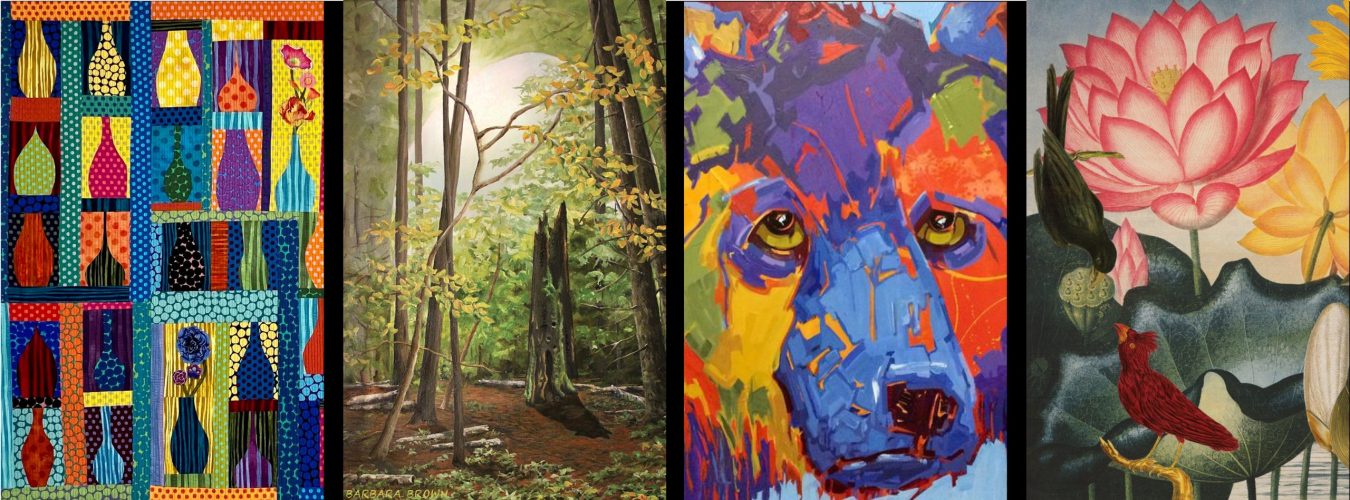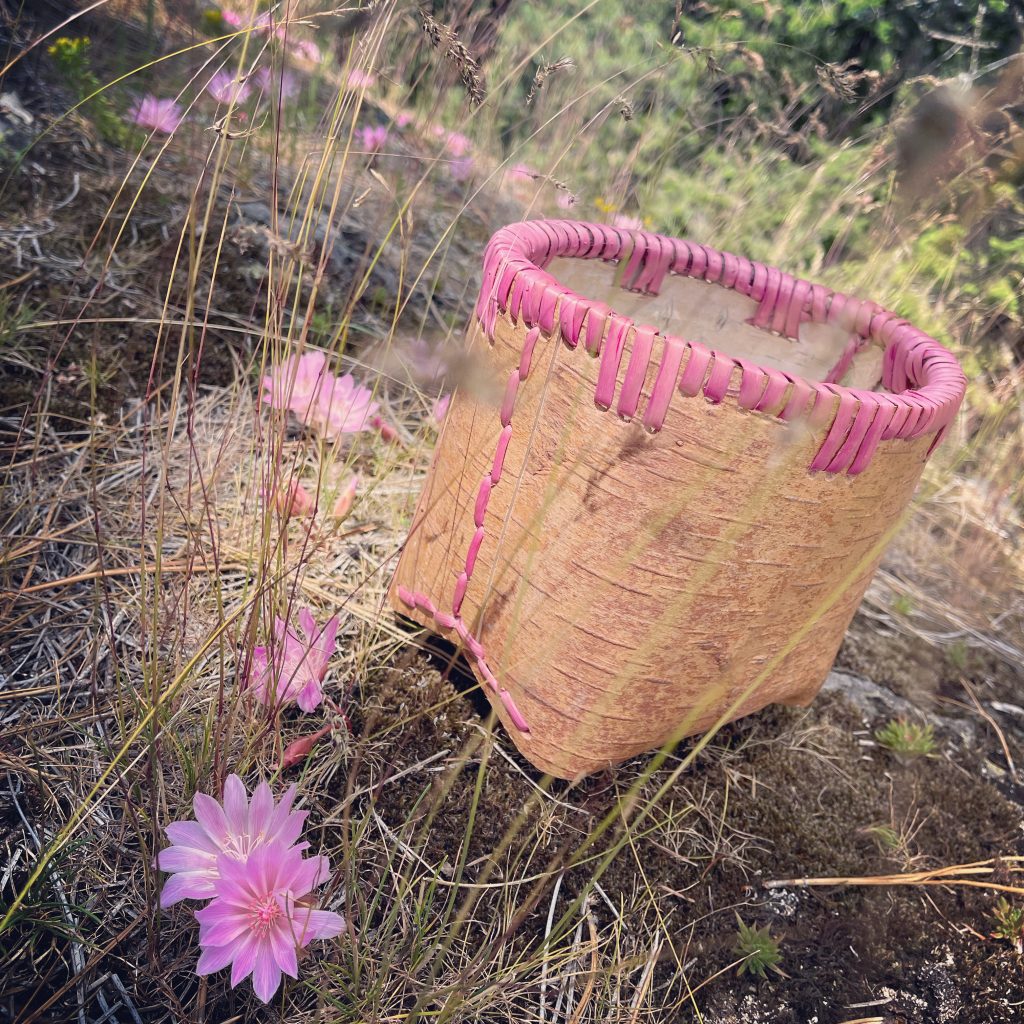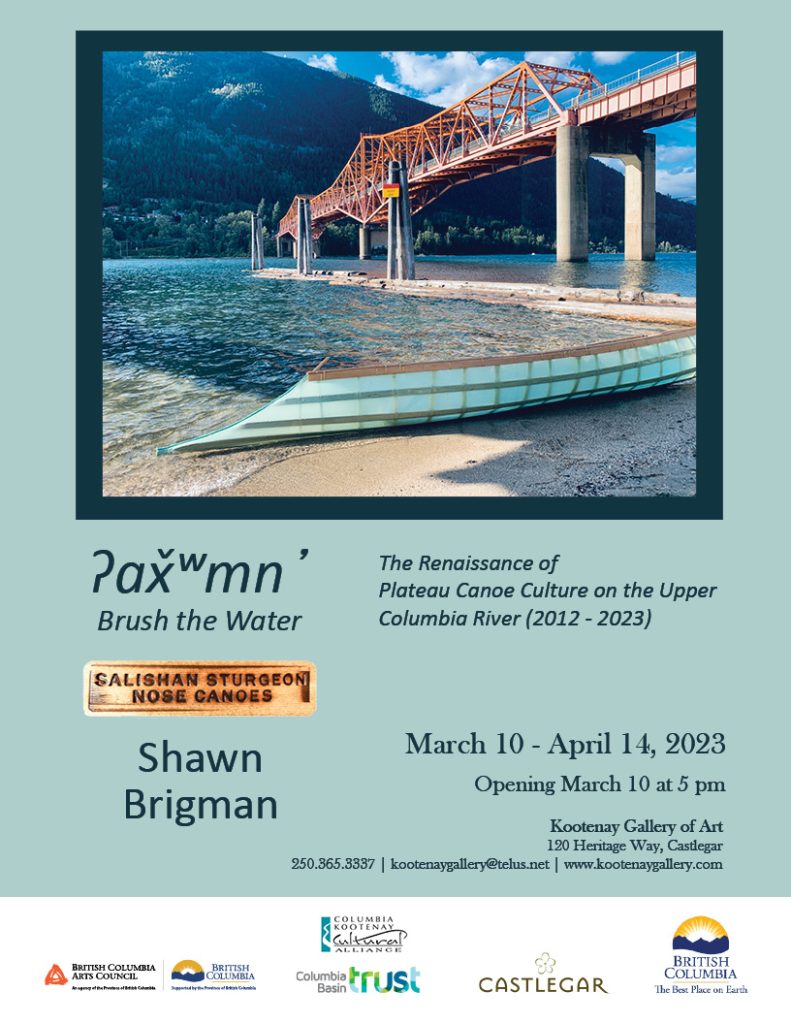
ʔax̌ʷmn ̓ : Brush the Water
The Renaissance of Plateau Canoe Culture on the Upper Columbia River (2012 – 2023)
Dr. Shawn Brigman

March 10 – April 14
Opens March 10 at 5 pm
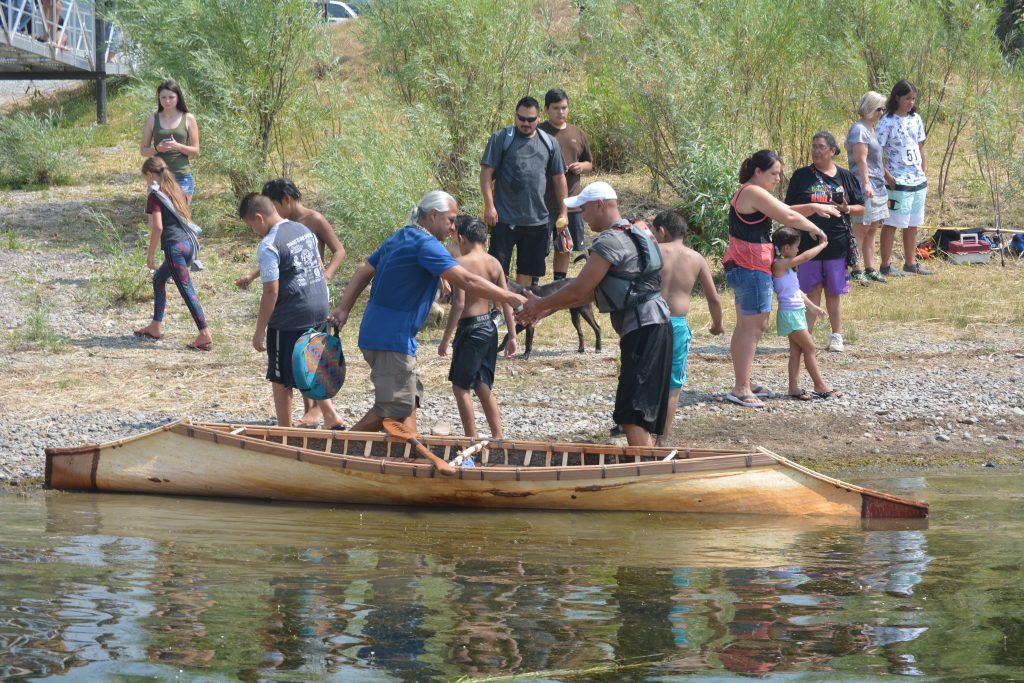
, Idaho. Photo by Bob Charlo
.
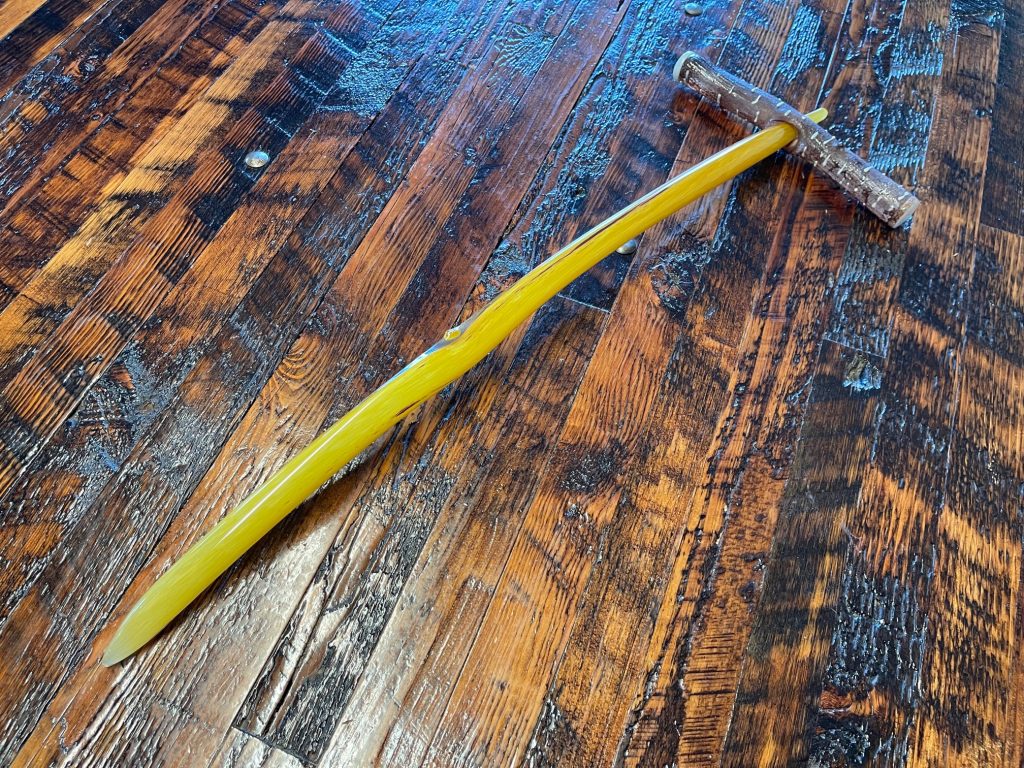
© Shawn Brigman, All Rights Reserved, Made at the Museum of Glass Tacoma
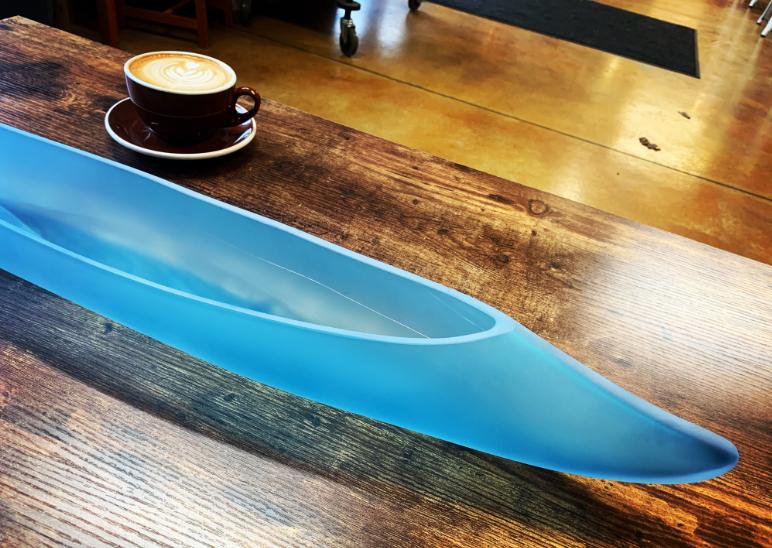
© Shawn Brigman, All Rights Reserved
Made at the Museum of Glass Tacoma
Artist Statement
Ancestral waterways
The rivers connect all the ancestral villages on the Columbia Plateau. As a Plateau-specific cultural form, the canoe represents the marriage patterns, food gathering patterns, Indigenous ways of knowing and being, and even a fish (sturgeon) important as a traditional food. The bow and stern of the historical canoe relates to the shape of the nose of a sturgeon, for it was the fish that once inspired the shape and design. In June of 2018 I caught my first cmtus (sturgeon) near Kettle Falls. I did so for traditional food purposes, but also to examine the form, shape, and relief textures of the fish for manifesting into relief carvings on paddles and on Salishan Sturgeon Nose Canoes. The external plates on the back and sides of the sturgeon fish are known as scutes. I now incorporate the sturgeon geometry into the contemporary canoes and paddles I carve. A few weeks after catching my first sturgeon at Kettle Falls, I attended the
2018 Kettle Falls Salmon Ceremony. At the canoe-landing site, one of the gathered nations sang their “sturgeon song” in addition to the “salmon song”. One of my Salishan Sturgeon Nose Canoes was in attendance, to hear the “sturgeon song” for the first time after making the journey with all the community dugout canoes. The ancestral connectivity and continuity of village life on the rivers made this cultural resonance possible.
Indigenous art, memory, and resurgence
Traditional art forms and natural materials are the essence of my art. It’s about getting out on the land and remembering or re-learning how to identity and use these materials. When an ancestral village implementation is finished (such as a tule mat lodge, fish basket trap, or bark sturgeon nose canoe), I reflect back and know that all materials were once alive and nourished by water and land, and now they have been processed into a beautiful sculptural and functional art form. When I think of memory, I think of the ancestral village sites along rivers and lakes. I think of the architectural heritage, the frameworks, like canoe frames, housing frames and how all village frameworks are connected. For instance the frame of a tule mat longhouse speaks the same language as the frame of a fish smoke drying rack or the frame of a fish weir crossing a river. The carved ribs of bark canoes are the same carved principles of bow and arrow, or the funnel fish basket trap making. Villages connected by travel on the water, this is the essence of my work.
Artist Biography
Dr. Shawn Brigman is an enrolled member of the Spokane Tribe of Indians and descendant of northern Plateau bands (snʕáyckst – sinixt, qlispe – kalispel, and tk’emlúps te secwepemc – shuswap). As a traditional artisan for 17 consecutive years, his creative practice has been one of project based ancestral recovery efforts in Washington, Idaho, British Columbia, and Montana. Through his art he aims to explore and transform the way Indigenous and settler people read Plateau architectural space by celebrating the physical revival of ancestral Plateau art and architectural heritage.
This involves working with Indigenous communities to connect to sources of Indigenous knowledge, often taking participant learners out to ancestral lands to gather a diverse range of natural materiality for ancestral structures like tule mat lodges, pit houses, and bark sturgeon-nose canoes. In addition, Dr. Brigman developed an original (copyrighted) canoe interpretation in 2013 with a unique frame assemblage and fabric skin attachment method now widely known across the Plateau region as a Salishan Sturgeon Nose Canoe, and he often gives presentations or lectures on this sculptural form. During the 2016 Prayer Journey to Standing Rock, North Dakota, four of his Salishan Sturgeon Nose Canoes successfully delivered water protectors who “brushed the water” (the Salish language term for paddling) of the Missouri River to the Cannonball River, with gathered canoes from across the Pacific Northwest.
Bark sturgeon-nose canoe shapes, construction techniques, and other characteristics are generated from centuries old local patterns. Although there is diversity within the styles of northern Plateau bark- sturgeon nose canoes, the principles of construction are the same and often the styles overlap with only subtle differences. Dr. Brigman’s artistic goal is to increase awareness and opportunities for Plateau artisans to teach, preserve and protect the integrity of ancestral “bark sturgeon-nose canoes” and his contemporary line of “Salishan Sturgeon Nose Canoes” from cultural appropriation.
Videos about Dr Brigman
Meet the Artist: Shawn Brigman at Museum of Glass Tacoma
Northwest Profiles: The Salishan Sturgeon Nose Canoe
